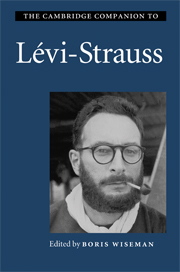11 - Of The Story of Lynx: Lévi-Strauss and alterity
from Part III: - Language and alterity
Published online by Cambridge University Press: 28 January 2010
Summary
Pedro Manuyama Fumachi, a 31-year-old resident of a poor neighbourhood of the town of Requena on the Ucayali River in Peruvian Amazonia, told the following myth to a researcher from a project on popular religion in the region:
After the flood a man who had several daughters was bathing, when Jesus Christ passed by, dirty, covered in the mud of the flood. As he passed by he saw the man and his daughters and asked the older one to get rid of the mud that he had, but she was swimming and refused and said, 'Why would I wash this filthy man.' Then the younger one offered to wash God and in return he chose her as the Virgin and raised her to heaven. To punish the older one who had refused, she left the water with scabies. From that day, black scabies exists. (Regan 1993: 151)
Pedro Manuyama's name indicates he is descended from the Cocama people, who dominated the lower Ucayali River at the arrival of the Spanish. His ancestors fiercely resisted conquest until their military defeat in the middle of the seventeenth century, when they finally accepted Jesuit mission life in Santiago de la Laguna on the Huallaga River to the west. They remained there until they began to disperse away from the abandoned Jesuit mission in the early nineteenth century back towards the Ucayali and beyond. The descendants of the Cocama form a major component of the poor riverine peasantry and urban dwellers of the region (see Stocks 1981 and Agüero 1994).
In my first reading of Manuyama's myth, I made little of it. At most, I thought it was yet another example of the tragedy of European colonialism for indigenous American people. Manuyama had been robbed of his birthright, and reduced to living as a second-class citizen in a slum in a place that was once the proud and exclusive territory of his feared ancestors.
- Type
- Chapter
- Information
- The Cambridge Companion to Lévi-Strauss , pp. 219 - 236Publisher: Cambridge University PressPrint publication year: 2009
- 4
- Cited by

